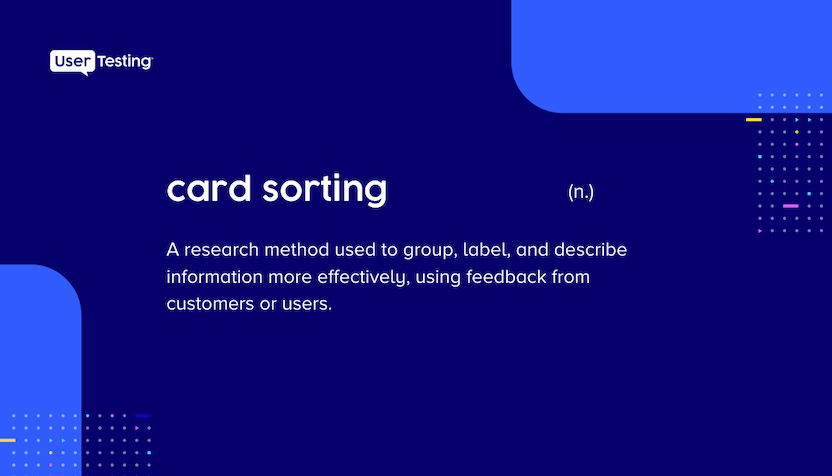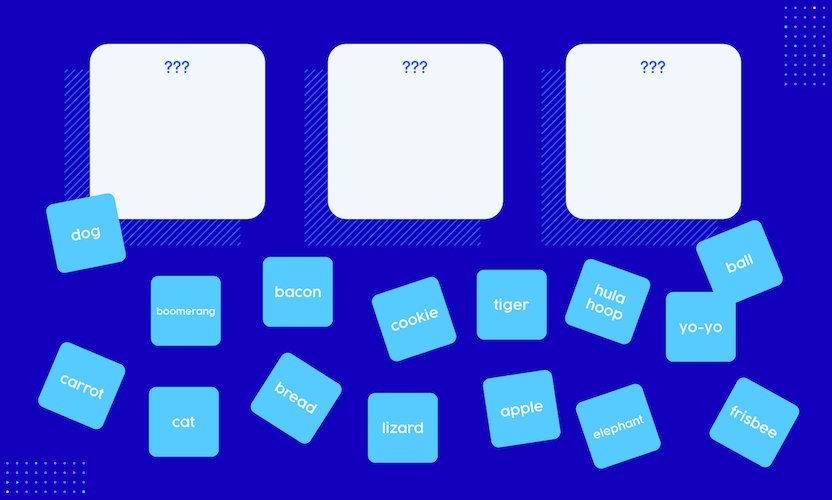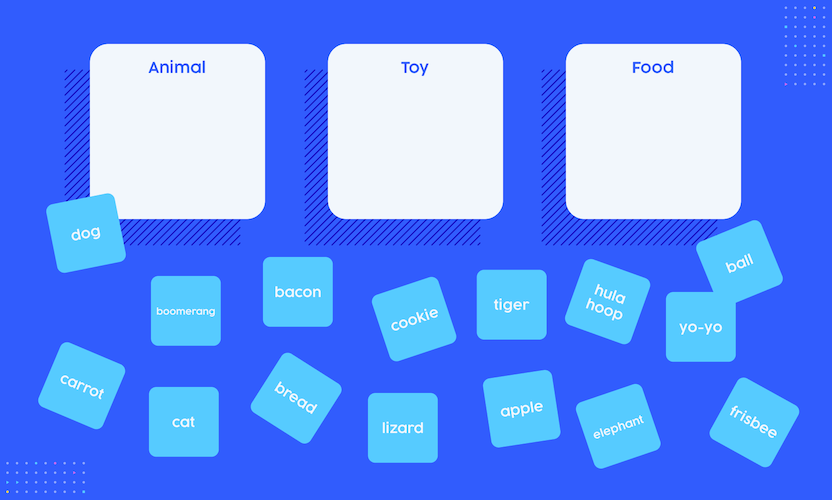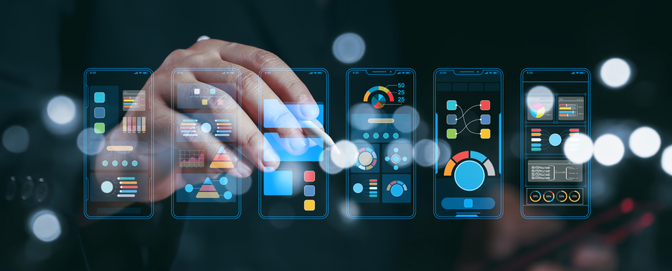
Card sorting: User feedback for designing customer-first information architecture

There’s something satisfying about the term card sorting. Something only those with a penchant for organizing and categorizing things might understand. And that’s because it hints at an outcome that’s both useful and systematic—which is exactly what you’d need if you were redesigning a website, building a new app, or pivoting to meet changing customer needs.
What is card sorting?
Card sorting is a qualitative research method used to group, label, and describe information more effectively based on feedback from customers or users.

Most commonly, card sorting is used when designing (or redesigning) the navigation of a website or the organization of content within it. And that’s because it helps to evaluate information architecture—or the grouping of content categories, the hierarchy of those categories, and the labels used to describe them.
Like many user research techniques, the goal of a card sort is to get inside your user’s head. That way, you’re basing decisions on qualitative data rather than hunches or gut feelings when making design choices. And by seeing and hearing your users perform a card sort, you can better speak their language and meet their needs.
Card sorting is useful if you’re trying to:
- Increase the findability of content on your website
- Discover how people understand different concepts or ideas
- Find the right words to form your navigation
- Adapt to customer needs and surface the most important information
The list goes on, and people always come up with innovative use cases for card sorting, but let’s continue with the basics.
What are the different types of card sorting?
Card sorting requires you to create a set of cards—sometimes literally—to represent a concept or item. These cards will then be grouped or categorized by your users in ways that make the most sense to them. For best results, you’ll need to decide if running an open, closed, or hybrid card sort makes sense. There’s a case for each:
- Open card sort: Participants sort cards into categories that make sense to them and label each category themselves
- Closed card sort: Participants sort cards into categories you give them
- Hybrid card sort: Participants sort cards into categories you give them but may also create their categories if they choose to
Which one you choose will greatly depend on what you want to find out and what you’re already working with.
Open card sort
An open card sort gives your users the most authority to the group and categorize information how they see fit. Because once they’ve organized the cards into groups, they will have to name each grouping—providing maximum insight into the user’s brain.

If you’re unsure how to design or categorize your website, an open card sort can help. It provides feedback from your users about what they find relevant and necessary to the group. With these groupings, you can make your website more attuned to your user’s interests and needs.
Closed card sort
A closed card sort is useful when the labels for something are prescribed or have already been set. In this scenario, your users would be responsible for organizing the cards into a sitemap that already exists.

Ultimately, it aims to gain insight to see if your existing categories seem logical to your users. As a bonus, it’s also great if you need to add some new content to a site or if existing content needs to be reorganized.
Hybrid card sort
In a hybrid card sort, participants will be sorting cards into categories you provide and can add their own. Normally, researchers will use this technique when they already have some categories established but would like their customer’s input on what the others should be.
Is card sorting qualitative or quantitative?
In it, card sorting is a quantitative process. The main quantitative data output from a card sort is a set of similarity scores that measures the similarity of how users grouped their sets of information. In other words, if all users sorted two cards into the same pile, then the two items represented by the cards would have 100% similarity. If half the users placed two cards together and half placed them in separate piles, those two items would have a 50% similarity score. So on and so forth. There’s additional quantitative data that the test provides, too—like the time it takes to complete, for example.
However, card sorting can also provide qualitative data in the form of user commentary, body language, and facial expressions. And there’s inherent value in watching participants complete a card sort. Beyond body language, observers can notice where participants get stuck when they reconsider their card placement and more. This can be observed by a researcher and recorded for overall consideration when making decisions later.
Conduct a remote card sorting test with UserTesting
Previously, in-person card sorting was the favored method of testing (over remote) because it allowed researchers to gather qualitative customer insights in addition to the quantitative. Now, several tools let you perform card sorting tests remotely, but they don’t allow you the option for capturing the qualitative.
Why should you run your card sort via UserTesting?
Through the power of the Human Insight Platform, running your card sort via UserTesting can deliver both qualitative and quantitative insights. You can also leverage our card sorting template to make things easier.
- Card sort results will help you understand how people think your content should be grouped. You can use the card sort results to quickly spot popular groupings and categories and use this information to build a better website or app.
- Recordings of the participant sessions will give you qualitative insights. In the video you receive, you’ll be able to watch your user complete the test and see and hear a recording of them completing it. Through this approach, you’ll gain answers to questions like “Did people find any task particularly confusing?” and “Why did people group the cards one way and not another?” As a bonus, our feature for suggested sentiment makes it easy to find where participants stumble during the test.
Why not use card sorting?
Good question. If you want to organize content in a meaningful and user-centric way, then running a card sorting test is smart. Without insights from your users, it’s tough to know if you’re designing your site or app intuitively for them. Remember, a good user experience almost always translates into good results for your business.
Additional reading: Tree testing vs card sorting
Card sorting is included with our Ultimate Edition subscriptions. For customers on our Advanced, Pro, Premium Editions, card sorting can be added for an additional cost. Please contact your account team for more information.
This article was updated 6/6/2023.
How can your design team leverage UserTesting?
Leverage UserTesting to streamline your design workflow and create top-performing products.





